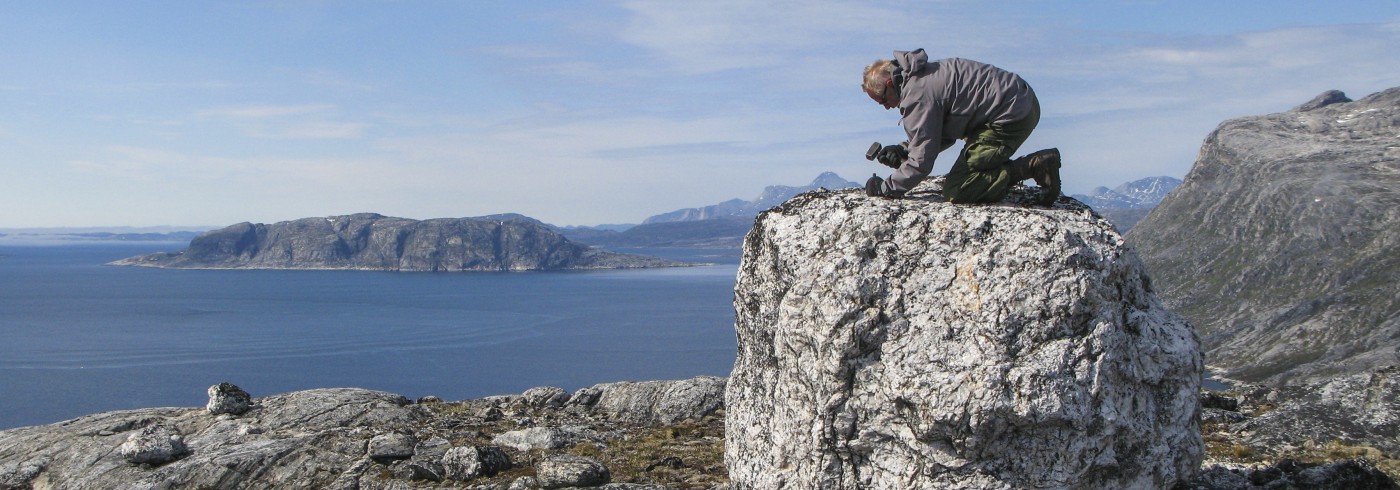Past impact of warming on the Greenland Ice Sheet
1 June 2008 - 1 July 2008
Rock sampling from erratic boulder with hammer and chisel at the outer coast near Sarqarssuaq. Photo: Nicolaj K. Larsen
The objective of this project is to investigate how the ice margin of the Greenland Ice Sheet reacted to earlier periods of warming, the interrelationship between sea ice and sea level changes and furthermore, to ascertain how such changes affected human adaptation and migration. This research is part of the Danishled RINK project, Respons af Indlandsisen til Naturlige Klimaændringer.
The activities reported here mark the first field season within the RINK project in southwest Greenland. Our main purpose was to collect rock samples for cosmogenic exposure dating from high altitude bedrock and erratics in a 100 km transect from nunataks to the outer coast. The set of exposure dates is intended to give an overall estimate of the thinning and recession of the ice margin during the last 10 000 years. Other objectives were to locate marine and lacustrine sedimentary archives and map landforms indicative of glacial erosion and sediment accumulation. The study area was chosen because the Inland Ice margin in this region is known for its vigorous response to climate change such as the Little Ice Age and the recent warming in the 20th and 21st century.
Fieldwork
During three weeks in June and July, we worked from four different field camps south of Nuuk, covering an area of the size of Skåne. Our mode of transport was a small helicopter, which meant that the equipment had to be kept at a minimum and our main study sites were two nunataks, which are exposed mountains surrounded by glacier ice. The first, Nunatak 1390, is located 15 km within the Inland Ice, while the second is located closer to the ice margin in the middle of the Sermilik Glacier. The nunataks are 1–2 km wide, 5–12 km long and the highest point is approximately 3–400 metre above the ice surface from where the view of the local scenery was absolutely fantastic. However, although the nunataks are isolated from land and difficult to access because of the heavily crevassed ice surface, we were never alone. The area hosts a rich wildlife including reindeer, hares and arctic fox as well as many birds.
Collecting rock sample
On a normal day in the field we would search for suitable sites to take rock samples for cosmogenic exposure dating by walking around in the alpine landscape. Every rock sample was carefully chiseled out with a hammer and chisel – sometimes a tedious procedure as the bedrock was often composed of hard gneisses. However, we normally succeeded in securing our samples and in the evening we struggled to get back to the camp with our backpacks filled with rocks, often having walked up to 25 km.
Possible outcome and further work
During the three weeks we used 12 helicopter hours to visit 10 sites where we took 85 samples for cosmogenic exposure dating. The samples have been sent to Prime Lab in USA, where they will be processed and dated and we expect to receive preliminary dates in the beginning of 2009. The new data will hopefully give us a better understanding of the retreat and thinning of the Greenland Ice Sheet during the last deglaciation and this information can be used to predict how it may respond to the present global warming.

